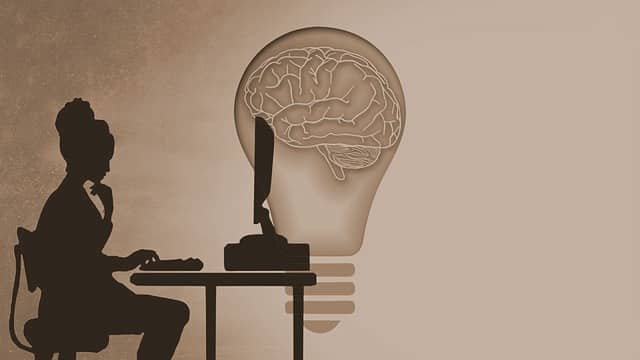Introduction :
Developing a machine that can replicate human cognition requires a conceptualization of predisposition, strength, and weakness. The software is capable of exhibiting general intelligence using artificial intelligence algorithms. This software uses artificial general intelligence and can deliver solutions to problems that belong to varied domains.
Artificial Intelligence problems process symbols, work on probability, and are evolutionary. Problems that are solved using Artificial General Intelligence process symbols. Problem such as Tower of Hanoi is solved using Artificial General Intelligence algorithms. More strictly speaking, Artificial General Intelligence solves general problems.
Solving the problem involves continuously breaking down the complex problem into sub-problems. This process is carried out until a sub-problem is achieved that can be solved directly by a well-establish and tested principle of artificial general intelligence algorithm.
To solve a problem using Artificial General Intelligence most essential step is used to model human cognition. Therefore, artificial intelligence algorithms such as Bayesian Networks, Fuzzy Logic, Neural Networks, etc., are useful in solving Artificial General Intelligence problems.

Artificial Intelligence
directly by a well-establish and tested principle of artificial general intelligence algorithm.
To solve a problem using Artificial General Intelligence most essential step is used to model human cognition. Therefore, artificial intelligence algorithms such as Bayesian Networks, Fuzzy Logic, Neural Networks, etc., are useful in solving Artificial General Intelligence problems.
Artificial Intelligence
When machines exhibit intelligence, then it is called Artificial Intelligence. Machines that perform activities based on developing conditions are called Artificially Intelligent Machines. These machines process voluminous data and predict the next action based on the outcome. Machines use Artificial Intelligence for a specific task to solve a problem. When the machine uses intelligence to solve problems that belong to different domains, it is called General Intelligence.
Artificial General Intelligence
Machines equipped with Artificial General Intelligence (AGI) can solve different problems raised in different spatial environments and contexts. These machines store the knowledge gained in one problem and later apply it to solve the problem in a different context.
The degree of general human intelligence is high. Artificial General Intelligence models this general human intelligence. Humans use artificial general Intelligence model techniques to solve predicate logic, knowledge database, perceptions, planning, and transfer learning. AGI uses statistics, probability theory, and human psychology to model these techniques.
Machines equipped with AGI solve problems using different approaches such as Logicist, Emergentist, and Universalist.
Triad Approach to AGI
The AGI systems solve problems by predicting the next action in a particular spatial context. To do this AGI system employs Logicist, Emergentist, and Universalist approaches.
Logicist Approach
In this approach, AGI systems process symbols used to represent knowledge. The symbols are processed using inductive logic. Symbols describe the problem space and its associated states. When the problem space and its states are defined, the symbols are connected using logic connective statements are built.
The logic connectives build truth statements that can specify the states. Moreover, each statement has an associated probability that can specify the degree of truth in the statement.
The statements define the system’s behavior by defining the rules used to solve the problem. AGI system builds these rules by applying inductive logic to solve problems. The symbols processed by the AGI systems have defined meaning, and humans define this meaning.
Emergentist Approach
This approach deals with natural language processing. In the approach, the patterns are identified. Patterns are formations developed based on common characteristics, and these formations repeat themselves so that they can be recognized.
When the problem is solved using an Emergentist approach, patterns are identified. Patterns can be pre-existed or can be developed as the process continues. An example of this approach includes matching sounds with the images. The Emergent systems are used to deal with neural networks or human psychology.
Emergent systems are also used in reinforcement learning and abstract reasoning. AGI systems that use the Emergent approach solve neural network problems and are used in deep learning. This approach of AGI is also used in image classification, detection of objects, recognition of handwriting, and recognition of speech. Emergentist approach of AGI system is also used in robotics, using which robots can learn.
Universalist Approach
The AGI system chooses the possible path to solve a problem in the Universalist approach. The AGI system use program to find the best solution to a defined problem by mapping a specific situation to a particular response. The program selects the best response against a particular situation.
Finally, the program uses the previously solved problem to build the solution for the posed problem. The Universalist approach combines the Logicist and Emergentist approaches and ensures optimal performance.
An Example
Deep Reinforcement Learning is an example of Artificial General Intelligence. Deep Reinforcement learning is widely used in Computer Vision and Speech Recognition. Computer Vision and Speech Recognition use large datasets to train the neural network. The neural networks are trained on raw inputs and thus deliver better outcomes.
The success of Computer Vision and Speech Recognition depends on how effectively reinforcement learning algorithms are connected to deep neural networks to deliver Artificial General Intelligence.
Conclusion
Artificial General Intelligence is an emerging domain and attempts to formulate human-level intelligence. The robot is an example of Artificial General Intelligence capable of performing different activities and adapting to emerging scenarios. Another example of Artificial General Intelligence is a Chabot capable of conducting conversation without human interference.
The future of AGI is explosive and is capable of developing ultra-intelligent machines. AGI is supposed to influence transformational technologies, nanotechnology, genetic engineering, brain-computing, and neural networks.
AGI is used to formulate human intelligence and develop patterns. For example, the diagram below is used by most of the AGI systems to recognize patterns. This is the most common approach used by most of the AGI. Thus, Artificial General Intelligence is the ability of the machine to perform intellectual tasks that humans can.






Leave a Reply